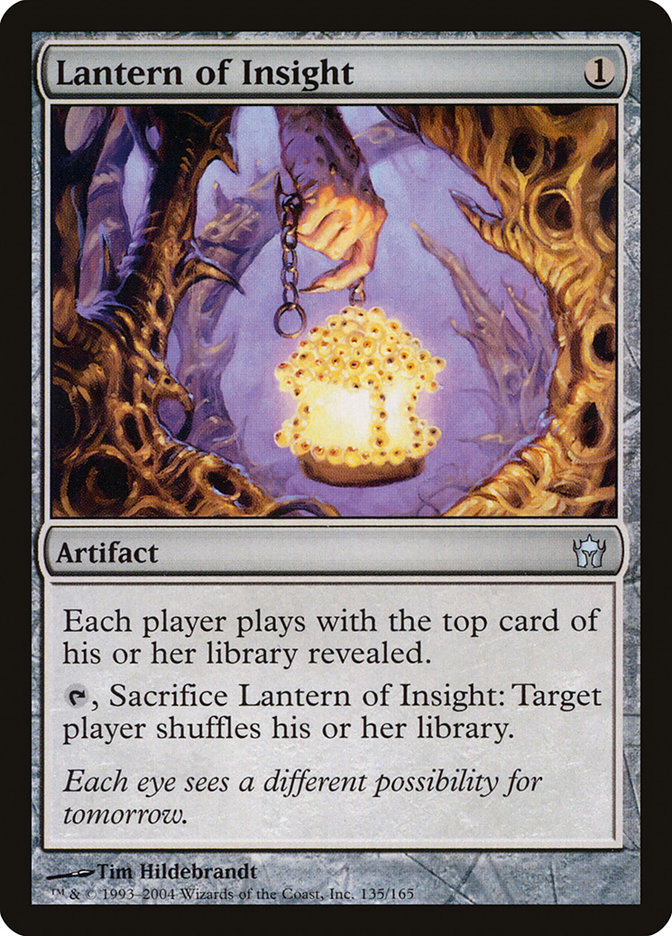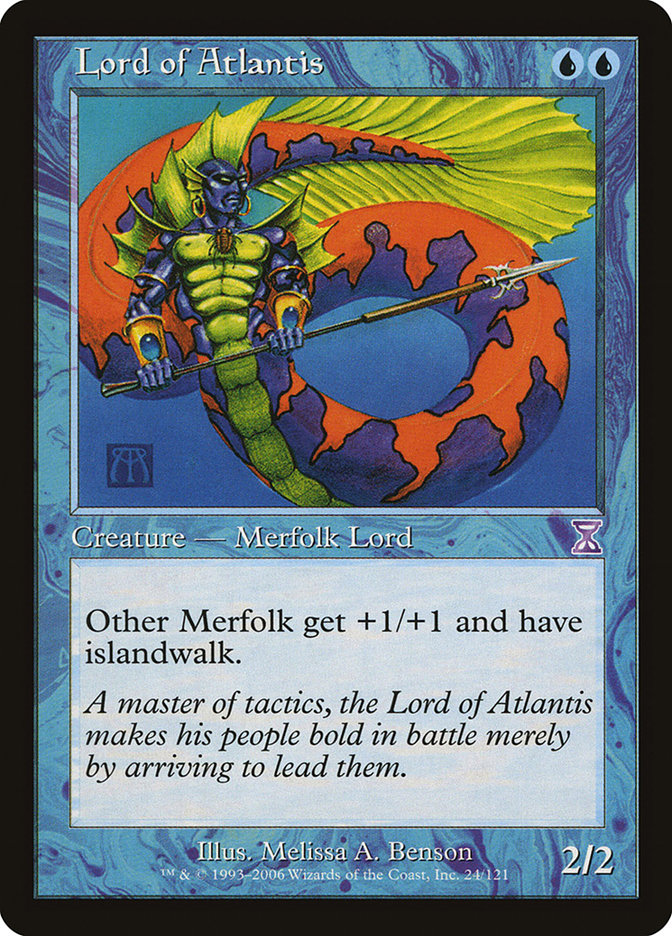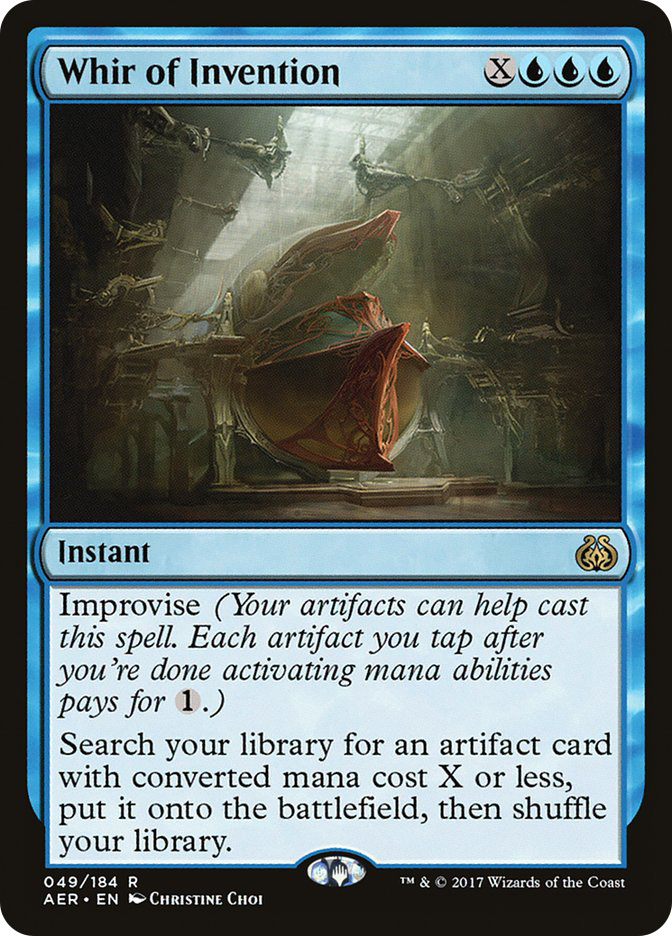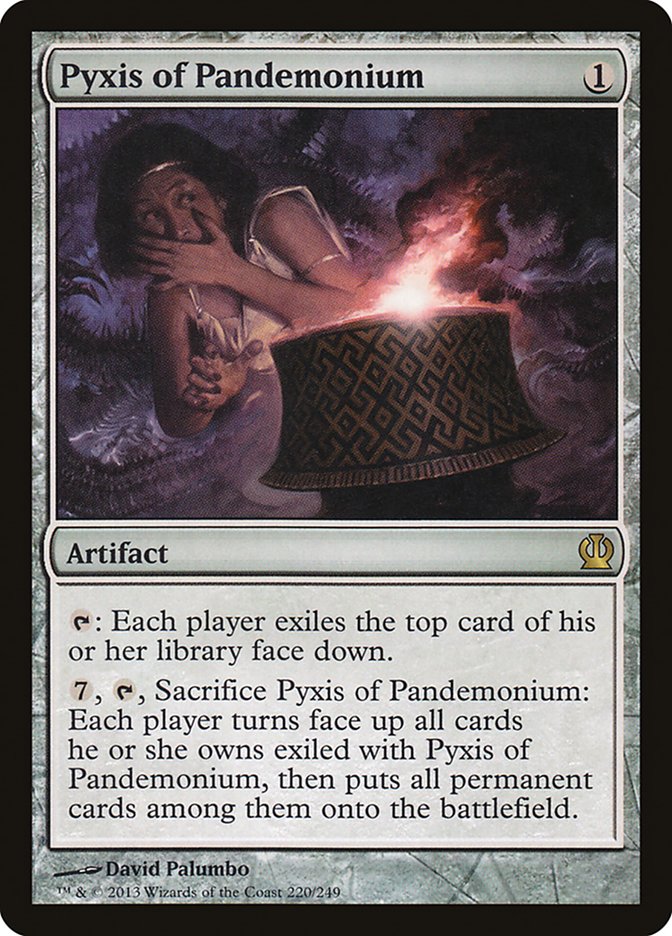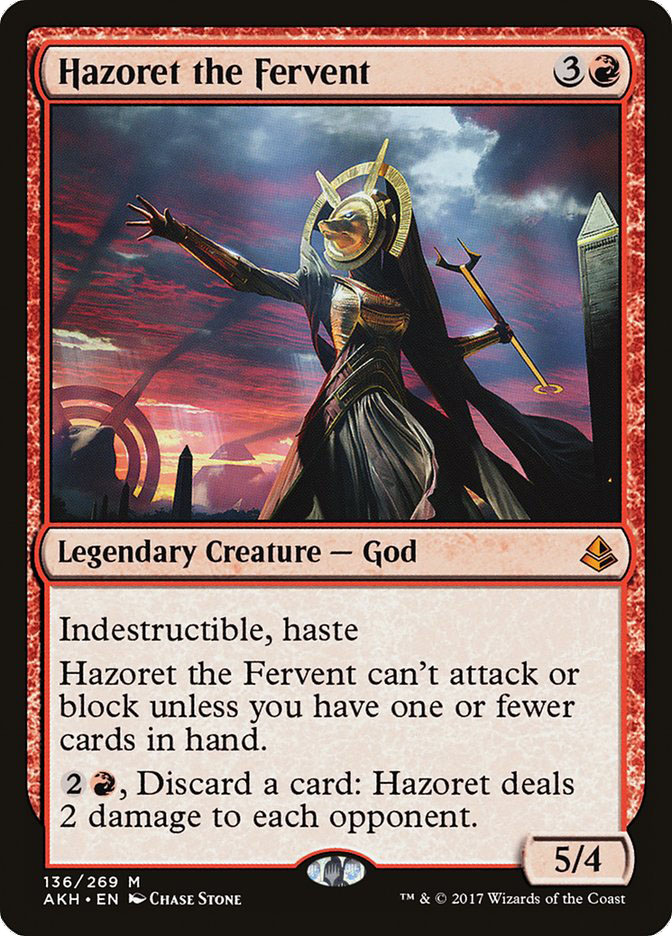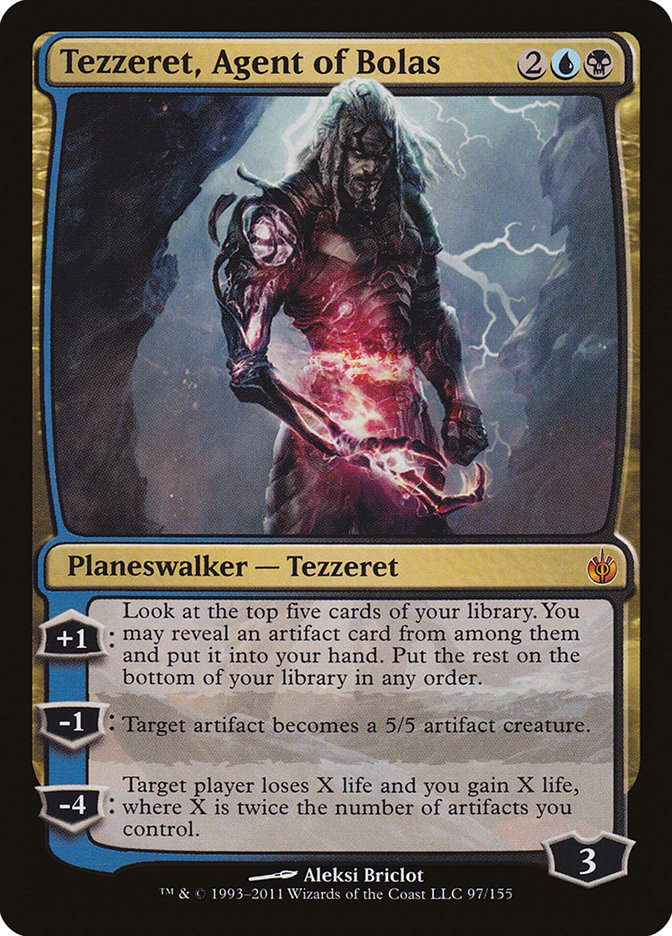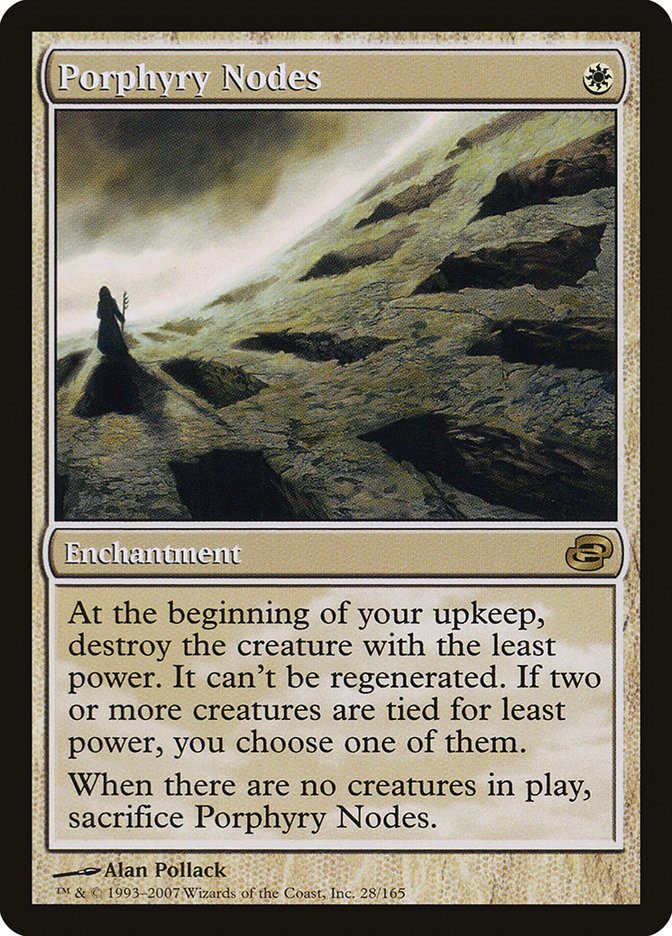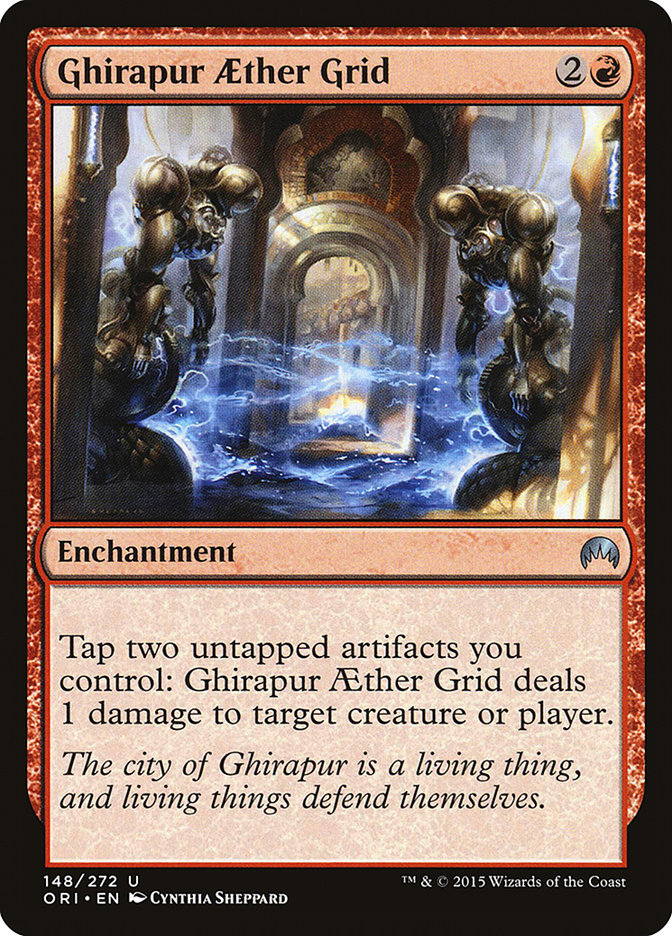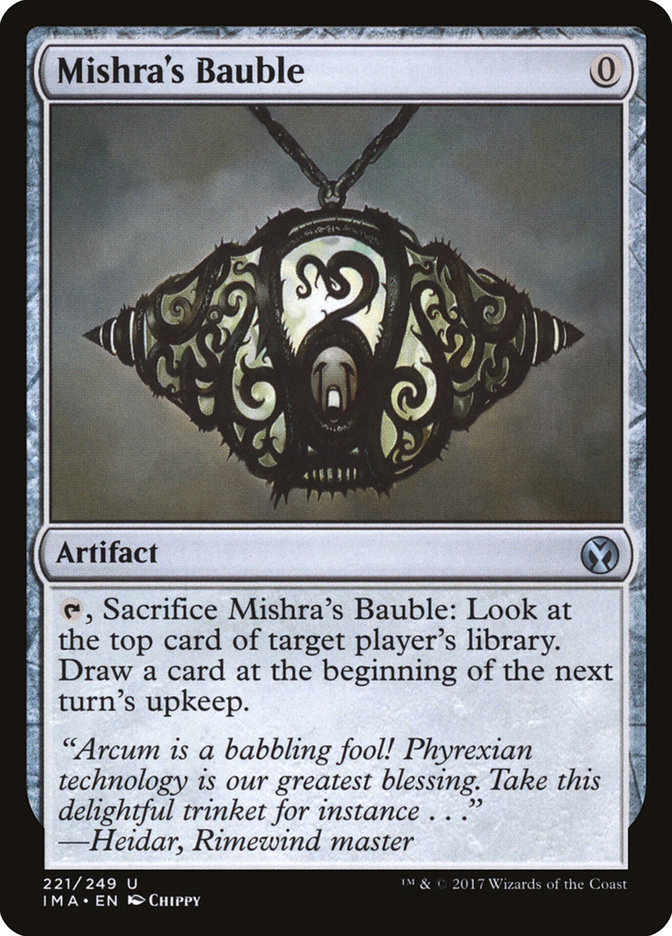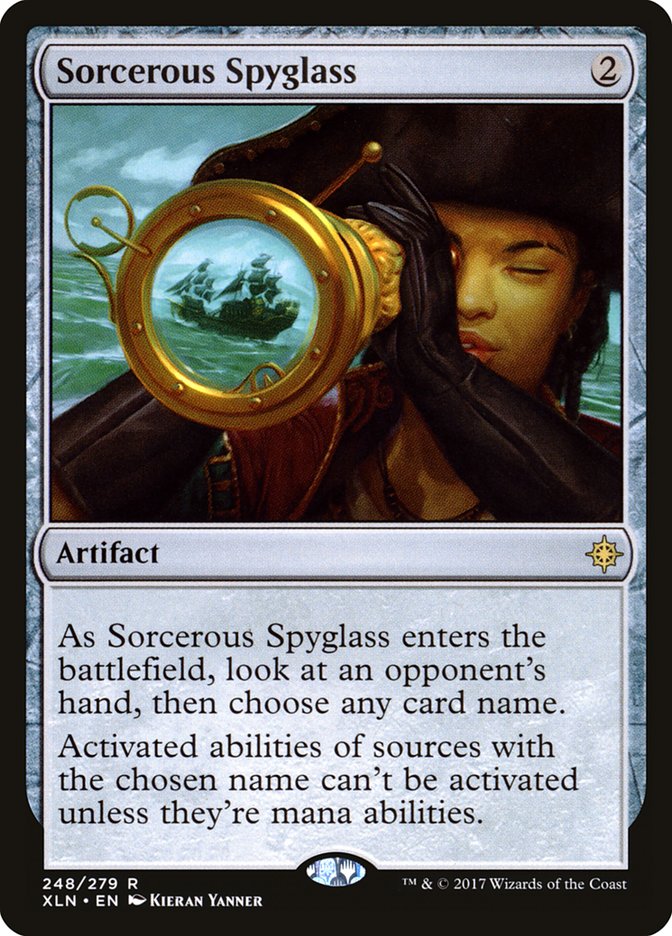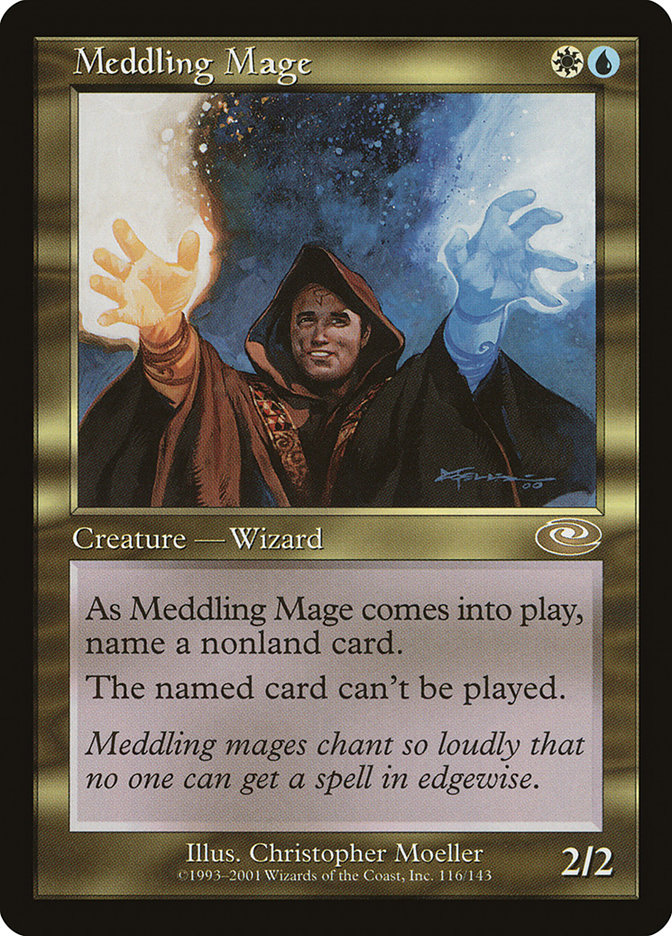Lantern Control doesn’t seem to have gotten a lot of attention in Modern lately, but it’s alive and well, and honestly, it’s probably gotten a lot better recently.
There’s an amazing thing about Modern that doesn’t get acknowledged much. Because the format changes so slowly and there are so many decks, it seems every archetype has a community built around it somewhere on the internet, and that’s pretty incredible.
There’s kind of a running joke among content creators that if you say something bad about Merfolk, angry fans will blow up your comments. I don’t know how all this works. I assume there’s just a particularly healthy Merfolk community, and maybe whenever someone writes something bad about it, someone there posts to the group, “Look, someone said Merfolk is bad, but we all know it’s great, so this is pretty funny, right?” I don’t think they’re an organized mob or anything. I just think they probably share things they think other Merfolk fans would find interesting, like, I don’t know, literally any mention of Merfolk anywhere, and then they all go check it out.
Forum admin pictured here.
I don’t think this is a weird thing that is special to Merfolk. I think this is just how Modern works. I’m not sure, okay? I’m not a Jeskai Control guy, so I haven’t looked for the Jeskai Control community. I just kind of assume it’s probably out there somewhere. For the most part, I’m not really invested in any single deck to be part of that deck’s community. I’ll play whatever, or whatever I play, I’ll just work on with a team I already have, but for people who don’t have a team of pros they work with, working with a group of people around the world who care about the same deck they do is an incredible resource.
Some of these communities may be stronger than others. Lantern, I would guess, likely has one of the stronger communities around it. This might be a bold prediction, since it’s kind of a fringe deck, but community-wise, it has a lot going for it. To start with, it was famously originally built and tuned to the point of being competitive on an open forum, and played to a Grand Prix win by Zac Elsik, a prominent member of that forum (as I understand it).
Possibly more importantly, I would guess communities grow a lot based on having solid public community leaders, and I think Kanister on Magic Online/Twitch (Piotr Glogowski) is a big part of that. He streams regularly, and almost always streams Lantern. His viewers are mostly Lantern players, and he discusses plays and card choices with his chat regularly. He also promotes a Facebook group for talking about the deck, and those Lantern players have collected incredible amounts of data about their composite win percentages against different decks, and broken it down into things like play versus draw or winning as a function of drawing certain cards so that their card selection can be data-driven. It’s all very impressive.
Anyway, the point is, if there’s a Modern deck you’re into, and you haven’t looked for a community that’s dedicated to the deck, you could likely get a lot more out of that than you could by trying to find an article that goes over it.
That said, for those of you who may have an idle curiosity about Lantern but aren’t looking to join the secret Lantern cabal, I figured I’d update you on what’s going on with the deck and why.
The big development is Whir of Invention, which has caused a split in the Lantern archetype. Some players play Whir and some don’t, as there are considerable costs and benefits associated with the card.
The major drawback is obviously the fact that it costs UUU, which is tough for what was essentially a B/G deck with a lot of colorless lands. This requires some concessions to the mana. Given the manabase of the deck, this doesn’t make it any harder to cast Ancient Stirrings or Inquisition of Kozilek, but it comes at the cost of utility lands like Ghost Quarter, Academy Ruins, and Inventors’ Fair, as you really need to prioritize colored mana sources.
This basically streamlines the deck, making it more consistent, but removing a little of the utility. I’m pretty sure this is a fairly large upgrade, as the deck is very hard to beat if it has Lantern of Insight, Codex Shredder, and Ensnaring Bridge on the battlefield by Turn 3, and between Whir of Invention and Ancient Stirrings, it becomes very easy to find all of that.
Surgical Extraction was one of the sweeter parts of the deck, but that’s been replaced with a maindeck Grafdigger’s Cage and Pyxis of Pandemomium, as it’s very important for all the bullets in the deck to be artifacts so that you can find them as needed.
This is the most recent list that was posted as a result of Kanister going 5-0 in a League (which he does very often):
Lands (18)
Spells (42)

Most of this is industry standard, since Kanister is basically the name brand that sets the standard, but, because he says so, I think this is somewhat outdated, as, for example, he’s replaced the Inventors’ Fair with a second basic Island, since consistency really is the name of the game here. The first Ghoulcaller’s Bell compared to the second Pyxis of Pandemonium is something of an open question; the cards are very similar, and you want at least one Pyxis to deal with stuff like Emrakul, the Aeons Torn and Ancient Grudge. Milling yourself is nice, but with no Surgical Extraction and only one Academy Ruins, Ghoulcaller’s Bell has lost a lot of value compared to the old lists, so I favor Pyxis.
The sideboard’s where things get really weird. It should be noted that Piotr likes to try out different things, and I think Hazoret the Fervent was the experimental card for this League, and I think it’s very unlikely that it’s optimal to have both Hazoret and Tezzeret, Agent of Bolas in the sideboard, as you don’t need that many big finishers.
The purpose of a card like Hazoret would be to clock people who might be able to win a long game against you. I’m thinking primarily of Tron, though I imagine there are others. I know some people play Bitterblossom in this slot, and I’ve even considered Geist of Saint Traft as a surprise way to clock them that can steal a game (the matchup against Tron is officially fairly horrible with the removal of Ghost Quarter and Surgical Extraction from the deck).
Porphyry Nodes is kind of like Ghirapur Aether Grid, but you only get one mana worth of locking out their creatures, though you only have to spend one mana to cast it. This is important, because clogging your hand so you can’t get Ensnaring Bridge down fast enough is an easy way to lose against fast decks, and Porphyry Nodes is a great answer to cards like Noble Hierarch. It doesn’t lock them out forever, but the idea is that the rest of your deck should be able to do that with the time the Nodes buys you.
Search for Azcanta is kind of another way to go bigger against slow decks that can compete with you in the late-game, but this is better where the texture of the game is that your opponent is trying to answer your threats rather than where you’re trying to answer theirs, so it shines against blue control decks, whereas a card that looks to directly end the game in a hurry shines more against Tron.
One of the more remarkable conclusions to come from the large amount of data the community has tracked is that there are certain matchups where you actually want to be on the draw. In the most notable example, across a moderate sample size, Lantern was winning over 20% more often on the draw against Titanshift than on the play. The idea is that they’re a critical mass deck that just needs a certain total number of cards to do their thing, and denying them one card, combined with your discard, just makes it much easier to cut lines off for them, and there’s no real advantage to being on the play because they don’t have any one-mana spells you want to make them discard and you don’t need a fast Ensnaring Bridge.
For me, this raises some interesting questions about where else it might be best to choose draw. I still want to be on the play against an unknown opponent, but there are enough matchups where it’s good to be on the draw that it really raises the point as something worth thinking about. At the very least, other Thoughtseize decks should consider choosing to draw against Titanshift. Really, what’s the point of being on the play against them if you’re trying to win a game of attrition like Death’s Shadow, rather than if you’re just forced to race them?
With any Modern deck that has a large number of players working on it, especially if there’s a central list or player they’re all drawing from, there will be a standard or “stock” version of the deck, and then most players will have their own variations. In Piotr’s case, while his list is somewhat definitionally the stock list, he also manages to always have a few variations or personal touches just because he’s always trying different things out.
Above is essentially the stock Whir Lantern list, but I want to discuss more possible variations:
Mishra’s Bauble is largely accepted as a core part of the deck as it enables faster starts with Mox Opal and helps cast Whir of Invention, which put it over the edge for most people who weren’t sold on it in G/B Lantern, myself included. That said, while having a “56”-card deck is nice, there are some very real costs associated with the card, both in terms of how your game plays out and in terms of adding air to a deck space that wants room for bullets because it has so much card selection. Against a deck like Tron, there’s a big difference between having access to three Pithing Needles and only two, for example, and if you cut Mishra’s Bauble, you can replace it with other cheap artifacts that you should still be able to cast in time to cast your Whir of Invention on Turn 3 and yet might add more to the deck.
Whir of Invention came partially at the cost of some number of Abrupt Decays, because the deck can only afford to have so many expensive spells and so many non-artifacts (and, yes, Abrupt Decay counts as an expensive spell in this archetype). As a result, there’s a bit of a gap in the removal suite. The sideboard has a good variety of removal to account for this, but there’s also a temptation to include artifacts that double as removal spells so that you can search for them. Cards like Engineered Explosives (which is a great bullet to answer Chalice of the Void); Executioner’s Capsule (which allows you to deal with weirdly problematic creatures like Tireless Tracker or Ruric Thar, the Unbowed); or even Dispeller’s Capsule, which answers Chalice of the Void if your Whir for it or Leyline of Sanctity / Witchbane Orb, but problematically doesn’t deal with Stony Silence, which is why it’s not a popular choice.
Some people have discussed Sorcerous Spyglass, which I think is a mistake; you see their hand enough off discard and costing an extra mana is a real problem. But I think Phyrexian Revoker is an interesting option as people remove creature removal against you, so it’s likely not more vulnerable, and the random potential clock can be good against Tron, which is the main place you want more of that effect. More importantly, unlike Pithing Needle and Sorcerous Spyglass, it can shut of Chromatic Sphere, which is one of their best cards against you because they can always stop you from denying them any given card while it’s on the battlefield, so when you’re trying to deny them anything, you’re just drawing them closer to whatever they want most. Phyrexian Revoker is one of the best cards you could add if you want to improve the Tron matchup, but it honestly might be better to chalk it up as a lost cause.
I’ve never liked Collective Brutality in Lantern, contrary to popular opinion. I currently believe that it’s essentially only good against Burn, and I’ve seen very little Burn lately. If I wanted to improve the Burn matchup, adding it to the sideboard would be reasonable, but I think the first Sun Droplet would probably perform better.
I mentioned Ghirapur Aether Grid earlier, and it’s always still an option, especially with the popularity of Humans and Company decks, and in some ways it benefits from the inclusion of Mishra’s Bauble, but I’d caution against thinking of Mishra’s Bauble as a cheap artifact to have on the battlefield for a repeated effect like this because there’s a real cost to keeping Mishra’s Bauble around any longer than you absolutely have to (you’re basically down a card). For me, I’m too scared to add another three-mana spell on top of Whir of Invention, so I prefer Porphyry Nodes, but the card is great at what it does.
Meddling Mage is a good example of the kind of random creature you can sideboard in to punish people for cutting removal. It has a large impact on the game and plays really well with the amount of information you’ll have, but it’s still somewhat narrow. Very good against combo decks, but I think most of the combo matchups are pretty good to begin with.
As always with Modern, this is far from an exhaustive list of possibilities. Essentially any Modern-playable removal spell could be a justifiable inclusion here, for example. Beyond that, having access to mana of any color and great card selection opens the door pretty wide on sideboard possibilities.
When you factor in the presence of a few matchups that are hard for the core strategy to beat, where trying to juke and catch them off guard with a weird threat, the possibilities are kind of endless, which is why I think this archetype is so captivating to players who really like to tune their deck and try new ideas.


